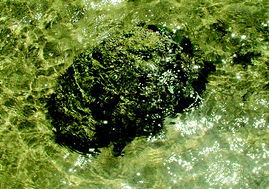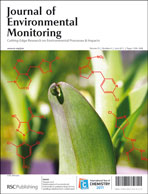Metals and organotins in multiple bivalve species in a one-off global survey†
Abstract
The Galathea 3 expedition circumnavigated the globe in 2006–2007 and collected marine samples from six continents. Bivalves were collected from harbours, other impacted locations and reference sites, and samples from 57 sites were analyzed for metals and 47 for organotins, to assess current contamination levels on a global scale. Metal concentrations in nine bivalve species were normalised to the Mytilidae family using conversion factors based on cosampled species and literature bioconcentration factors. The lowest metal and tributyltin concentrations were below background assessment concentrations (BACs) agreed in the Oslo–Paris convention (OSPAR) for the North Sea, and at most harbours the concentrations were orders of magnitude above BACs. The lowest concentrations of Cd and Pb measured here suggest that the BACs should be lower in a worldwide context. The sources of metals were classified according to human impact using principal component analysis. High relative concentrations of Hg, Pb and P were source


 Please wait while we load your content...
Please wait while we load your content...